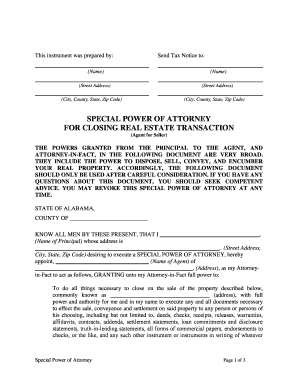
Get the free condominium real estate form
Show details
CONTRACT FOR THE SALE AND PURCHASE OF REAL ESTATE DEVELOPED CONDOMINIUM UNIT In consideration of the mutual promises contained herein, the undersigned Seller agrees to sell, to the undersigned Buyer,
We are not affiliated with any brand or entity on this form
Get, Create, Make and Sign

Edit your condominium real estate form form online
Type text, complete fillable fields, insert images, highlight or blackout data for discretion, add comments, and more.

Add your legally-binding signature
Draw or type your signature, upload a signature image, or capture it with your digital camera.

Share your form instantly
Email, fax, or share your condominium real estate form form via URL. You can also download, print, or export forms to your preferred cloud storage service.
Editing condominium real estate online
Use the instructions below to start using our professional PDF editor:
1
Create an account. Begin by choosing Start Free Trial and, if you are a new user, establish a profile.
2
Upload a document. Select Add New on your Dashboard and transfer a file into the system in one of the following ways: by uploading it from your device or importing from the cloud, web, or internal mail. Then, click Start editing.
3
Edit contract sale real estate form. Add and replace text, insert new objects, rearrange pages, add watermarks and page numbers, and more. Click Done when you are finished editing and go to the Documents tab to merge, split, lock or unlock the file.
4
Save your file. Choose it from the list of records. Then, shift the pointer to the right toolbar and select one of the several exporting methods: save it in multiple formats, download it as a PDF, email it, or save it to the cloud.
It's easier to work with documents with pdfFiller than you can have believed. You may try it out for yourself by signing up for an account.
How to fill out condominium real estate form

How to fill out condominium real estate:
01
Gather all necessary documents such as title deeds, seller's disclosure forms, and any previous inspection reports.
02
Carefully review and fill out all sections of the purchase agreement, including the sales price, financing terms, and desired closing date.
03
Complete all required disclosure forms, including those for lead-based paint, homeowners' association rules, and any known defects in the property.
04
Obtain financing or proof of funds if purchasing with cash, and provide necessary documentation to the lender or escrow company.
05
Schedule a professional inspection of the property and address any issues or concerns raised in the inspection report.
06
Work with the seller or the seller's agent to negotiate any repairs or requested credits based on the inspection findings.
07
Obtain homeowner's insurance for the property to protect against any potential damages or liabilities.
08
Coordinate with the lender, escrow company, and seller to ensure a smooth closing process, including the transfer of funds, signing of documents, and recording of the deed.
09
Conduct a final walkthrough of the property to ensure that it is in the agreed-upon condition before taking possession.
Who needs condominium real estate:
01
Homebuyers looking for a low-maintenance property option, as condominiums often offer shared maintenance responsibilities and amenities.
02
Individuals or families who prefer to live in urban or highly populated areas, as condominiums are often found in city centers or desirable neighborhoods.
03
Investors looking for potential rental income or investment opportunities, as condominiums can be rented out to tenants for additional cash flow.
04
Retirees or empty nesters looking to downsize from a larger property and enjoy a sense of community and security that many condominiums offer.
05
People who desire amenities such as swimming pools, fitness centers, and common areas, which are often included in condominium complexes.
06
Individuals who are not interested in the responsibility of exterior maintenance, as many condominium associations handle landscaping, snow removal, and exterior repairs.
Fill purchase form real estate : Try Risk Free
For pdfFiller’s FAQs
Below is a list of the most common customer questions. If you can’t find an answer to your question, please don’t hesitate to reach out to us.
Who is required to file condominium real estate?
The owner of the condominium unit is required to file the necessary paperwork for the real estate.
What is condominium real estate?
Condominium real estate, also commonly referred to as a condo, is a type of housing where a person or family owns a specific unit within a larger building or complex, while sharing common areas and amenities with other unit owners. Condos can be apartments, townhouses, or even detached houses, and they often come with communal facilities like swimming pools, gyms, or parking areas, which are jointly owned and maintained by all the residents. Each individual owner has legal rights and responsibilities related to their unit, and they typically have to pay monthly maintenance fees or dues to cover the expenses of maintaining and managing the common areas and shared facilities.
How to fill out condominium real estate?
1. Start by providing your personal information, including your full name, contact details, and mailing address.
2. Identify the specific condominium unit you are interested in by including its address, unit number, and any other relevant details.
3. Specify whether you are purchasing or renting the condominium unit.
4. Include the purchase price or monthly rental amount you are willing to pay.
5. Mention any desired terms or conditions, such as lease length or any specific amenities you are seeking.
6. Indicate the specific date you wish to move in, if applicable.
7. If you are applying for a rental, include information about your employment, income, and any references that could vouch for you as a reliable tenant.
8. Include any additional comments or special requests, such as the desire for a furnished unit or any necessary alterations to the space.
9. Read the entire document carefully and ensure all information is accurate and complete.
10. Sign and date the document, and consider making a copy for your records.
11. Submit the filled-out form to the appropriate person or real estate agent handling the condominium.
What is the purpose of condominium real estate?
The purpose of condominium real estate is to provide an alternative housing option for individuals or families who are seeking to own a space within a multi-unit building. Condominiums, or condos, are individual units within a larger complex that share common areas and amenities.
The purpose of condominium real estate can vary depending on the perspective:
1. Homeownership: Condominiums offer the chance for individuals to own a property without the responsibilities and maintenance that come with owning a single-family home. It allows residents to have a sense of ownership and control over their living space within a community setting.
2. Shared amenities: Condo developments often provide shared amenities such as swimming pools, fitness centers, community rooms, and landscaped areas. The purpose is to offer residents access to facilities they might not be able to afford or maintain individually, creating a sense of luxury and convenience.
3. Community living: Condo living fosters a sense of community as residents share common areas and interact with their neighbors. This can create a social and communal atmosphere for those who desire it, allowing for connections, friendships, and potentially shared responsibilities.
4. Investment: Condominiums can serve as investment opportunities for buyers. Owners have the potential to generate rental income from their units, especially if they choose to rent out the property to tenants. This can be particularly appealing in high-demand areas where renting might be more affordable and provide a return on investment.
Overall, the purpose of condominium real estate is to provide an alternative form of homeownership and offer various benefits, such as shared amenities and a sense of community, for those looking for a different kind of living experience.
What information must be reported on condominium real estate?
When reporting on condominium real estate, the following information must typically be included:
1. Location: The specific address of the condominium unit, including the building name or number, street name, city, state, and zip code.
2. Size and Layout: The total square footage of the unit, as well as the number and type of rooms, such as bedrooms, bathrooms, living rooms, dining rooms, and kitchen.
3. Amenities: Any amenities provided by the condominium complex, such as swimming pools, fitness centers, parks, playgrounds, parking facilities, security measures, and community spaces.
4. Association Fees: The amount of common area maintenance fees or condominium association fees that the owner is required to pay, along with a breakdown of what these fees cover.
5. Rules and Regulations: Any specific rules, bylaws, or regulations enforced by the condominium association, including pet policies, rental restrictions, noise restrictions, and architectural guidelines.
6. Financial Health of the Association: The financial status of the condominium association, including the amount of reserves, any pending special assessments, and any ongoing or resolved litigation.
7. Insurance Coverage: Details about the insurance coverage provided by the condominium association, such as general liability insurance, property insurance, and coverage for common areas.
8. Recent Sales and Market Information: Information about recent sales of comparable condominium units in the same complex or nearby, including the sale price, time on the market, and any notable market trends affecting condominium real estate in the area.
9. Property Management: Information about the company or individual responsible for managing the condominium complex, including contact details and any reviews or ratings.
10. Disclosures: Any material disclosures required by law or regulations, such as known defects, problems, or issues with the unit or the complex, pending assessments, or pending legal actions.
It's important to note that the specific information required for reporting on condominium real estate may vary depending on regional laws, regulations, and market practices.
What is the penalty for the late filing of condominium real estate?
The penalty for the late filing of condominium real estate can vary depending on the jurisdiction and specific regulations in place. It is advisable to check with the local government or relevant regulatory authority to determine the exact penalties for late filing.
How do I make changes in condominium real estate?
pdfFiller not only allows you to edit the content of your files but fully rearrange them by changing the number and sequence of pages. Upload your contract sale real estate form to the editor and make any required adjustments in a couple of clicks. The editor enables you to blackout, type, and erase text in PDFs, add images, sticky notes and text boxes, and much more.
Can I create an electronic signature for signing my condominium form in Gmail?
With pdfFiller's add-on, you may upload, type, or draw a signature in Gmail. You can eSign your condominium purchase sale and other papers directly in your mailbox with pdfFiller. To preserve signed papers and your personal signatures, create an account.
How do I complete condominium estate on an iOS device?
Download and install the pdfFiller iOS app. Then, launch the app and log in or create an account to have access to all of the editing tools of the solution. Upload your condominium unit form from your device or cloud storage to open it, or input the document URL. After filling out all of the essential areas in the document and eSigning it (if necessary), you may save it or share it with others.
Fill out your condominium real estate form online with pdfFiller!
pdfFiller is an end-to-end solution for managing, creating, and editing documents and forms in the cloud. Save time and hassle by preparing your tax forms online.

Condominium Form is not the form you're looking for?Search for another form here.
Keywords relevant to purchase agreement real estate form
Related to condominium purchase agreement
If you believe that this page should be taken down, please follow our DMCA take down process
here
.






















